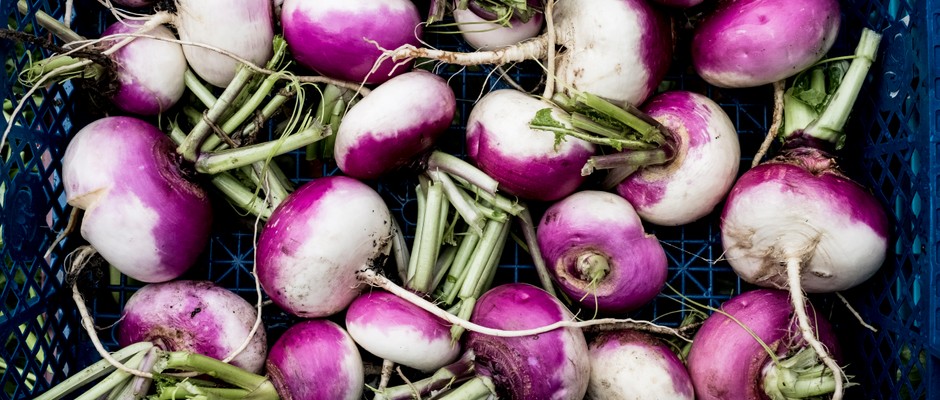
Thérèse Coffey says eat turnips but what are turnips anyway?
Environment secretary Thérèse Coffey suggested recently we should be eating turnips in the tomato shortage, but what even is a turnip anyway? Our columnist Ken Thompson explains
Hardly had the words left Thérèse Coffey’s mouth before I imagined the conversation at kitchen tables throughout the land: ‘Turnips? What does she mean? Turnips or swedes? And what’s the difference anyway?’
I wish I could tell you that there are two species of Brassica, and that one of them is a turnip and the other is a swede. If only life were so simple. So, for those of you who want the whole truth, here it is. For those of you who don’t care, I can’t say I blame you.
Are swedes and turnips the same?
Let’s start by leaving the minefield that is cabbage out of it, and instead focus on two very similar large, yellow-flowered brassicas, Brassica napus and B. rapa. If I told you that one of those plants is rape, I’m sure you would hope it was B. rapa, but you would be disappointed. It’s B. napus.
The origins of it are a mystery
To add to the confusion, rape isn’t even a proper species – it’s originally a hybrid between B. oleracea (cabbage) and B. rapa, and exists only in cultivation. Despite being unknown as a genuine wild plant, rape is now very common in the wild as an escape from cultivation, not least because, given the quantity of its seeds moved around the country, no other plant is quite so likely to have fallen (literally) off the back of a lorry.
The B. napus cultivar was bred for its swollen root
Anyway, you’re now thinking, why are you telling me about rape, I thought this was meant to be about turnips? Well, not content with mixing up their Botanical and English names so that no one can remember which is which, B. rapa and B. napus have another trick up their sleeves. The familiar B. napus cultivar, bred for its oil-rich seeds, and which now turns so much of Britain yellow in early summer, is rape. But there is another B. napus cultivar bred for its swollen root. The origins of this form are a mystery, but it was originally popular in Scandinavia and spread from there to the rest of Europe, hence the name Swedish turnip, or swede for short.

So, swede and rape are different cultivars of the same plant. And B. rapa, which you will recall is one of the swede’s parents, is the familiar turnip. Unlike rape, neither swede nor turnip escapes from cultivation much, although the wild turnip (lacking the swollen root) is a common wild plant.
But are swedes and turnips roots?
Now two questions for connoisseurs of turnip trivia. Pay attention at the back there.
First, are swedes and turnips roots? Not really. Both are technically swollen hypocotyls, the hypocotyl being that part of the young plant above the true root and below the seed leaves, or cotyledons. Thus if you have friends who claim not to like root vegetables, you can safely feed them both swedes and turnips. If they complain, all you can do is tell them that you took them at their word, and they need to be a bit more careful about saying what they mean.
If you have friends who claim not to like root vegetables, you can safely feed them both swedes and turnips
Second, if presented with a turnip and a swede, how could you be sure of telling them apart? The key is that although both are swollen hypocotyls, the turnip is only hypocotyl, while the swede also incorporates the lower part of the stem. A turnip is therefore almost entirely smooth, but a swede always has a ‘neck’ bearing several concentric ridges near the top, which are the attachment scars of leaves.
Turnips and swedes are similar, but different, brassica beasts, with intriguing heritages. But there’s really no way of knowing which one Ms Coffey wants us to eat.
Here's more on growing vegetables in pots.
Authors
Ken Thompson is an experienced ecologist and gardener, and author of several popular books who spent most of his career at Sheffield University

Niwaki bundle worth £57 when you subscribe
Subscribe to Gardens Illustrated magazine and claim your Niwaki bundle worth £57
*UK only

Container Gardening Special Edition
The Gardens Illustrated Guide to Container Gardening.
In this special edition, discover colourful flower combinations and seasonal planting schemes for pots designed by leading plantspeople, and essential know-how for container gardening success. Just £9.99 inc UK p&pBy entering your details, you are agreeing to our terms and conditions and privacy policy. You can unsubscribe at any time.

Gardens of the Globe
From botanical wonders in Australia to tranquil havens closer to home in Ireland, let this guide help you to discover some of the most glorious gardens around the world
By entering your details, you are agreeing to our terms and conditions and privacy policy. You can unsubscribe at any time.




